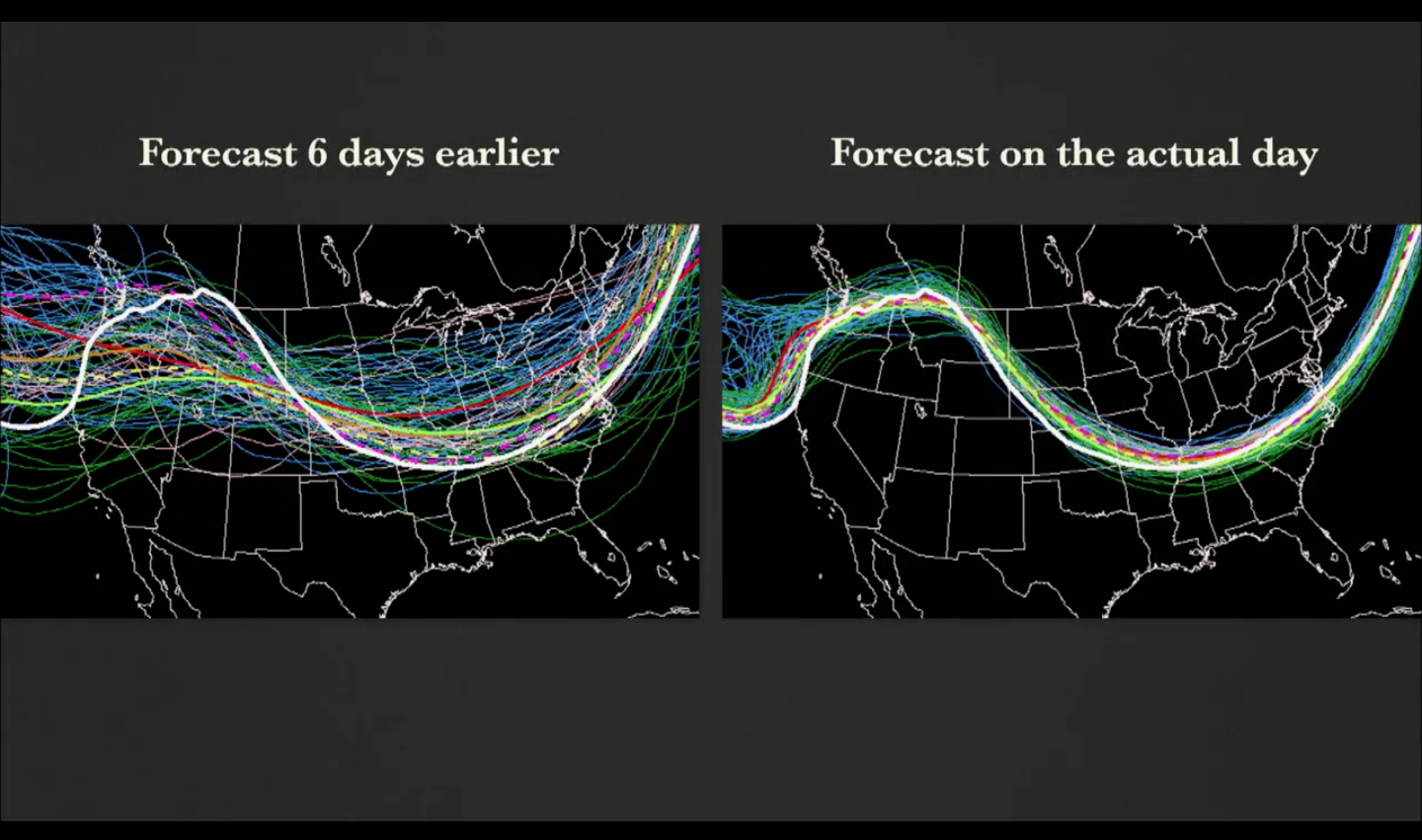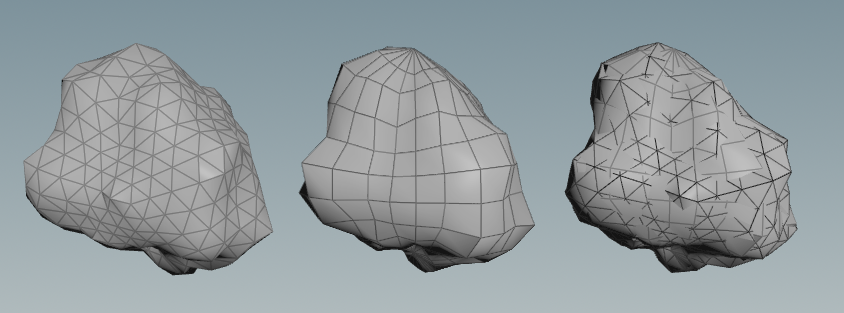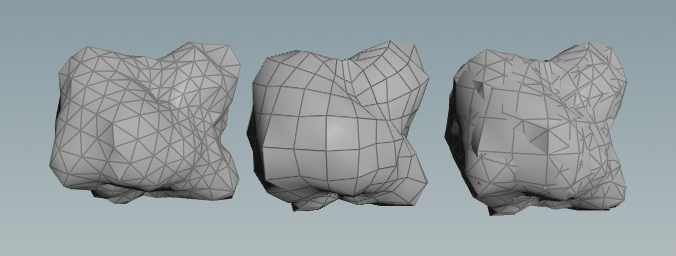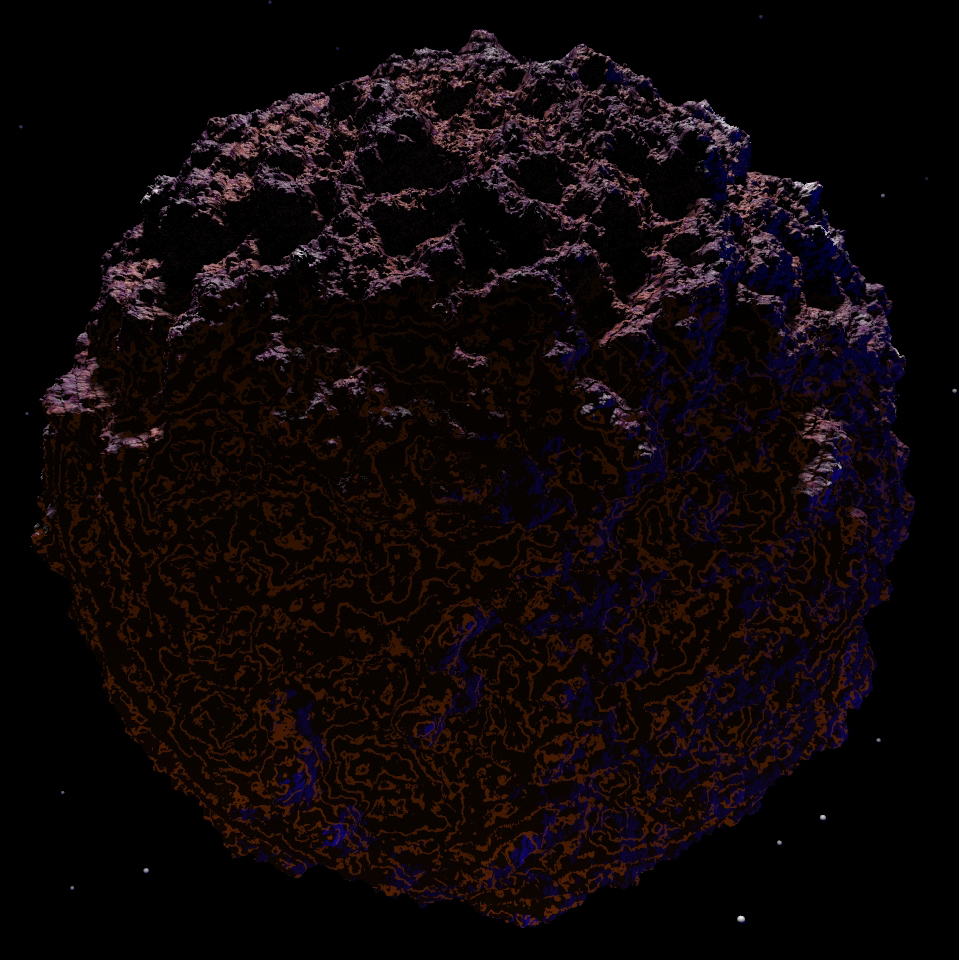Speculative Simulation
produced by: George Simms
Read Me______________________________________
This project explores dynamic simulators as a speculative tool for understanding and exploring thoughts, perceptions and feelings. I have been looking at the ways contemporary society simulates, visualizes and transforms physical phenomena into virtual space. Investigating how we standardize and compress the uncertainty of the universe to create a solid foundation for an already precarious simulation apparatus; challenging the notion that simulators provide an objective or realist perception of the world. Looking at how dynamic simulators are used in science to construct our cosmos and their potential use as world builders for processing thoughts, building-up/breaking-down concepts, using their elements to augment the simulation apparatus. I am exploring this through a speculative means to see how we can use these mechanisms to understand more than what we can see and sense, breathing some space into what can be a dense and incommunicable topic.
For this speculative approach I have been influenced by poet, historian and writer Alexis Pauline Gumbs and her book “M Archive” (Gumbs, 2018), which I feel she uses as an exploratory tool to simulate worlds, weaving together narratives of future reflection to float her ideas of black feminist metaphysics. She uses the character of a naive yet knowledgeable researcher to explore a lost and cryptic post-apocalyptic world, who builds up and revisits the lost or unfound worlds of tomorrow’s yesterday. In a similar way I want to use my practice and this writing to weave new worlds and perceptions for my work to float on. Gumbs uses the table of elements to build ideas of chemical interactions, exchanges and poetic assemblages, and much in the same way I want to build on the preexisting simulation apparatus and highjacking it into the speculative realm. The form of this essay also means to weave the concepts of this project together, taking on the mechanism of object-oriented programming, a form that allows us to package and refract processes, ideas and motions through each other.
To understand the dynamic process of simulation I have built a milieu of simulators, theory and practice. With these we can start to study and refract through Each apparatus creating new forms of representation, adding dimensions to how we perceive and use them, building and breakdown our own constructs; Using simulators to configure perceptions of the world through new visualizations and virtual phenomena.
Miniture aparatus of a solar system.
Setup ______________________________________
Bodies >>
“A phenomenological analysis shows a variation between what could be called full or multidimensional experience and a visual objectification of presumed body experience. Where does one feel the wind? Or the vertigo in the stomach? Can it be felt “out there” in the disembodied perspective?” - (Ihde, 2002, p.4)
Don Ihde, a phenomenological philosopher and technological critic, gives an analogy in his book ‘Bodies in technology’(Ihde, 2002) for the existence of the virtual bodies and explains them through a non-digital example. He compares virtual bodies to the existence of the third person, using the scenario of jumping off a cliff as a thought exercise. The first person, or as Ihde would put it “real-life” self, is a multi-dimensional experience and existence in this world and so feels the wind tare through their hair and the “Tummy Phenomena” as they rush towards the ground. Through the third, it would be hard to fully comprehend one or multiple of these dimensions of experience, leaving us without any realistic feeling or representation data of any possibly feelings or existences.
Agential realism >>
“In fact, the agential realist ontology that I propose does not take separateness to be an inherent feature of how the world is. But neither does it denigrate separateness as mere illusion, an artifact of human consciousness led astray. Difference cannot be taken for granted; it matters-indeed, it is what matters.” - (Barad, 2007, p.136)
Karen Barad’s ‘Agential Realism’(Barad, 2007) puts us within the apparatus, seeing any means of anthropocentric interpretation as a jumping off point, bridging the gap between physical and virtual. She sees any materially discursive practice as a tool for augmenting the nature of matter's ontology. Questioning how we may have constructed these means of perception and how these structures may affect or deteriorate our abilities to understand and construct the cosmos’ ontology. Negotiating the differences in matters existence, realizing an agential existence, placing us within our own structures, agentialy affecting these bodies and us through them.
Barad & Bohres >>
“For Bohr, things do not have inherently determinate boundaries or properties, and words do not have inherently determinate meanings. Bohr also calls into question the related Cartesian belief in the inherent distinction between subject and object, and knower and known.” - (Barad 2007, p.138)
Looking at Karen Barad’s critique of physicist Niel Bohr’s use of apparatus and the assemblage of his particle. We see it redefine the boundaries of matter, a boundless approach which sees all matter intertwined, a milieu of existence. This perception really breaks down the barriers of particles, releasing the compressed multidimensional data out of the point. The ocean of space is filled once again, fluid, ever present, a recalculation of its ontology allowing a broader perception of the bandwidths of materiality. Bringing to life the forces which entangle the web of phenomena and giving them fluid bodies in space. I saw this perception revealing space, oozing with data, a lost world filled to the brim.
OOO >>
“The world is not the world as manifest to humans; to think a reality beyond our thinking is not nonsense, but obligatory.” - (Harman, 2011, p.26)
A contemporary alternative to Karen Barad’s agential position is Graham Harman and Object-Oriented Ontology. Harman approaches OOO as “speculative realism”(Harman, 2011) creating new ways to think beyond ourselves and our minimal perceptions of the world. He starts with a “flat ontology”(Harman, 2018), one with less anthropocentric foundations, seeing a strata to our perception of reality, with ‘real objects’ which can be formed from objects or events. On top of these there is an “Anthropocene”(Harman, 2018), a layer of depiction and conception that we as humans float above the ‘real’, a milieu of signs meshing infinitely. He attains for a unified theory for understanding existence but critiques science as being the wrong place for it, trying to pinpoint down elements of its framework to unified theories, provable in the human domain. These retain sciences structural integrity, often when these theories definition are still dubious, unproven or anthropocentrically bias.
Update ______________________________________
Read Me >>
Points can be used to symbolize any number of bodies from planets to particles, speculative or realist. Particles can work solely or have relations, be a part of a greater web and have many dimensions but are mainly displayed in the second dimension. The representation of these points normally a modest and faded dot or circle that renders the point pointless in its representation, making it function smoothly within a virtual apparatus but a false representation of its potential real-world self.
So what's the point everyone's getting at? Whether its objects, bodies, phenomena it seems to be a temporal mask which we assign to the unknown, a means to assemble what we cannot, ‘virtually bringing together an ontology of what matters’. Weaving and exploring our umwelt of existence, speculating through apparatus at plausible formations and augmenting our beliefs through them. With this movement we have the momentum to start to move out of this rut of monism in simulation, updating it with affect to hold other forms of bodies/objects/phenomena.
Chance Arrays >>
<< Bodies
<< OOO
Weather forecasting relies on accurate mass data to create any sort of reliable outcome, using endless sensors around the world to create an image of the atmosphere and its potential fluid materiality. Through this compounded virtual body of data, it is easy to create a vivid prediction of the now and even the near future, but if we move on a few days through the simulation we would be lucky if it stays accurate and useful. This is due to a few reasons, one being the set of data will always be slightly incorrect and the other being the virtual apparatus is never the same as the real one. One way of tackling this problem is ‘ensemble forecasting’, which runs the simulation multiple times with small variances in the body of initial data, creating a spectrum of paths that cover a variety of possibilities. In a similar way I am using a spectrum of simulators to create interweaving augmentations of what these virtual bodies can be/do, pushing days into the future and seeing the scattering of their “diffraction Patterns”(Barad, 2007). Immersing into the fluid world of dynamic simulation, seeing the possibilities of this mechanism and the extent of its existence.
Screenshot from Prediction by the Numbers (PBS, NOVA, 2018) showing ensemble forecasting in action and the scattering of results and the change in accuracy as we move days down the simulation, the white line being the true measurement on the day.
Simulating Phenomena >>
<< B&B
<< Agential Realism
“apparatuses are specific material reconfigurings of the world that do not merely emerge in time but iteratively reconfigure spacetime matter as part of the ongoing dynamism of becoming.” - (Barad, 2007, p.142)
Through Karen Barads approach we see a divide disappear between our simulator apparatus and the phenomena that we represent it with. The materiality of phenomena being a symbiotic formation, our witnessing, conception and rendering are essentially a configuration of a vastly complicated objective universe, but we must not get lost in our own conceptions of it. With this in mind I am building with an actuation, with a means to form and compose phenomena, augmenting the way we can view the cosmos and the way it can be understood and negotiated.
Noisy ontology >>
<< OOO
<< B&B
We have seen phenomena compressed and conformed into abstract bodies of dynamic simulation. Isolated and confined, we can speculatively break them out, decompressing these bodies by external forces and notions. The Mathematical process of Noise can be used to disturb the force fields of particles, bringing life to these points and returning them back to a world of flux foundations. You could imagine the oceans of multidimensional noise, fluid yet predeterminant, gradients of smooth linear randomness, new weaved bodies afloat, living on its waves.
The original Perlin noise produced by Ken Perlin (Perlin 1985) uses the Hermite blending function to produce smooth but still kind of clunky gradient values up to 4D/5D. It has been used to dynamically and procedurally realize many CGI projects and bring life to what would be soulless visualizations. The original Perlin noise has been subsumed by Simplex noise (Gustavson 2005), which provides one major visible change in the gradients, as they are much smoother. As you move from macro to micro there are no breaches to its definition, the gradient is almost without irregularities. The difference in the algorithmic process is that Perlin noise works on the principles of the first dimension where the only suitable shape for covering space is a square. When we move up to the second or third dimension rectangles leave a lot of space unspoken for, seen as bumpy gradients. Simplex has its foundations built on equilateral triangles; it is a more adaptive shape to fill multidimensional space. In the 2nd dimension you produce this transformation from square to triangular by moving the points into the axis with nonuniform scaling, creating a rhombus which can then be split into two equilateral triangles.
- Perlin
- Simplex
sphere displaced along normals by noise, meaning to represent how triangles have better coverage in multi-dimensional space than squares, with an overlap to show them interweave. (Images rendered by me)
DRAW ______________________________________
Noise >>
<< OOO
<< B&B
I saw the movement of simplex noise squashing, dividing and re-mapping a multi-dimensional space as inspiration to re-approach my simulation apparatus, thinking of the different formations as alternative ways to form and visualise our Anthropocene, leaking different imagines of the virtual body through. Instead of creating bodies that can just abstractly visualize motions we can see and sense, I started to based it on another dimension starting augment their vivid images/imagines into speculative explorations into abstract thoughts and perceptions. Bringing this new symbolism to practice I started to visualize some of simplex noises ontology, resurrecting dull spheres with it, forming new places for growth, planets to inhabit, forms to diffract my thoughts through.
planets produced with noise and procedural shaders in Houdini, creating evolving and no static worlds.
I took a basic sphere and applied noise through a vertex shader, forcing it to take new forms, colors and materials. The noise was passed through a medley of functions which form it, turning the gradients into mountains and valleys, cliff edges and streams; the possibilities as endless and multidimensional as the noise. The shader acting as the projected ontology of an unknown object, augmenting the Anthropocene of the sphere and forming it into our desired conception of it.
The forms of each body so complex, creating a clean gradient of understanding means we may have to skew our rigid structures of perception, allowing for the virtual phenomena to weave closer to the conceptual or RL bodies they reference, letting the gradients of their being leak through.
Another render, but showing the lines of ontology peering through the darkness.
Points in space >>
<< Simulating Phenomena
<< B&B
<< Agential Realism
<< Points
This is an interactive ‘N-body’ simulator (a dynamic planetary/particle simulator) I coded in open frameworks. It has points moving in space along trajectories with desired position, which are mathematically predetermined with a melae of forces pulling and pushing it through the virtual void. The one major difference that I imposed was the viewer to be present in the universe, moving freely and exploring the motions of this simulated universe. As a presence in the universe you are also are an agentail force in it, you have a gravitational field which pulls these bodies from their original place and into rotation around your point. Everywhere you move you pull the bodies out of place and into new formations, never really seeing the true form of this virtual universe. This movement allows the viewer/participant to control the way they want to see and form their universe, moving away from the burden of precomposed narratives and enabling you to explore for yourself the phenomena in this virtual environment.
Screen capture from interactive N-Body simulation.
Space>>
<< Simulating Phenomena
<< B&B
<< Agential Realism
<< Bodies
To processing the concepts of Barads materiality I built a means to visualize them and work through them, weaving her concepts into its processes. The mechanism takes a small number of points spread out in the virtual space which have been assigned extra dimensions beyond their 3 positioning dimensions. These points represent particle bodies in a simulated space, holding many layers of data used to produce phenomena; blending, merging and converging these dimensions. It reforms the apparatus to display the void in between the few points by saturating it with secondary points, creating a denser ocean that can refracted the materiality of the space through it. The attributes or higher dimensions of the original points are then transferred to the new points by linear interpolation, this brings about a mathematical representation of the materiality of the space and the potential values the attributes may have at those points.
The attributes then drive a visualizer to dictate elements such as scale, color and connectivity to a mesh formed from the ocean of points, space as a formed fluid body. Whilst working on this transformation I was thinking through its process, I played with alternate augmentations of its apparatus, I used it to display the different faces of the simulation, the hidden dimensions normally left un-visualized, ambient within the mechanism. The different forms it took on depending on how you processed its existence, how you formed its ontology. it was interesting just trying to connect this space and bring it into view, but I did feel it was a bit counter intuitive and backwards using points to represent what points could not.
Render showing two diferent fields displayed in parallel, I found it unintentionally resembled the cover of 'Meeting the universe Halfway'.
The Bonds Between >>
<< Simulating Phenomena
<< B&B
<< Bodies
<< Noisy ontology
I started to see a place beyond points that has an ocean of noise to fill it. The materiality of simulators focuses on bonds between instead of singular point, the phenomena, the matter that matters in a simulation. Vertices are a junction, a space of orientation, scale and structure, they are bonds in their very nature, they are a building block of virtual space much like points, but speculatively and conceptually revert the apparatus. Moving forms by what connects them and not by their singular parts, disturbing them and rearranging their framework, formed from equilateral meshes wrapping tightly to the body, weaving bonds that carry dimensions of materiality, movement and noise.
I decided to try and create a simulator based on vertices as these form a good basis for building a new form of simulator. I coded the simulator in Open Frameworks, which functioned to distorted and reform spheres by their vertices. Introducing noise into the forms makes them shift overtime, expanding and contracting, start to breath and cohabitate this space. Their skin patterned by their gradients of their existence, this skin covering the bonds of this woven form, these bonds transformed by the flux of their existence.
Screen grab of 'Bonds Between', exploring the virtual phenomena.
To skew our perspective and bring us into the apparatus the simulator breaks traditional perspective leaving you disoriented within these bodies. As you scroll through their vibrant bodies each rises and falls uncertainly, pulsating gently. This place brings thoughts of another dimension, another perspective to approaching, another process for you to process and a new existence and place for your ideas to play out.
Bibliography:-
Annotated:-
Gumbs, A.P. (2018). M Archive. [Durham & London], Duke University Press.
Alexis Pauline Gumbs uses this book as an experimental means to explore her concepts of black metaphysics, this field and the subjects she touches upon in the book cover a huge spectrum of topics. She tackles this by bringing a speculative performance of them, taking us through many devices and approaches, giving us more than ideas, a means to see it and understand it, a new network to devise an understanding from. I found her use of the periodic table, voices and writing styles as an insight into how I could use, adapt and reform the existing simulation apparatus and the accompanying writing to form new passages for production and exploration.
Barad, K. (2007). Meeting the Universe Halfway. Duke University Press.
Barads book brings about a new composition of matter, breaking it down through a critique of materialy discursive practises, such as language and quantum physics, she shows how we form space time matter from social and scientific phenomena. Her break down of Bohr’s particle changed the way I was conceiving the material world, relieving it of definitive borders and cumbersome preformed materialities. Her use of quantum physics to understanding and break down social, political and scientific phenomena was an influence on my own hijacking of simulatory bodies for similar effect. Agential realism intertwined the simulatory apparatus, the phenomena it represents and us, pressneting the agency we have over these mechanisms and in turn them over us. Her ideas where interesting to explore through my new conceptions of simulators, as well as influencing the way I saw simulators working and functioning in a wider schema, being world builders as well as explorers.
Ihde, D. (2002). Bodies in technology. University of Minnesota Press.
Ihde’s presents this book in a form of many short essays, each exploring the existence bodies in and around technology. The form of his writing was an influence on my essay structure, dividing a complex and endless topic into manageable and intertwined short essays. He takes a phenomenological perspective, referencing Maurice Merleau-Ponty (1908-61), grounding his examination of the flaws in current virtual existences. Looking at the way science and society’s virtual apparatus visualises virtual bodies and prioritises them over situated ones. I wanted to try to subvert these practices and use simulation as a tool to reinvigorate the ground we stand on, allowing us control, providing an understanding of the simulatory apparatus as we explore virtual bodies with/through it.
Harman, G. (2018). Object-Oriented Ontology: A New Theory of Everything. Penguin Random House.
I chose Harman as he is a contemporary alternative to Karen Barad in the ‘speculative realist’ world. His assemblage of an object-oriented ontology allows objects, physical or virtual to exist autonomously, placing them out of us but still semi within our reach. I used his ideas to build up some of the speculative simulation apparatus, which tries to manipulate his ‘Anthropocene’, challenging the ontology of how we perceive the objective world. Bringing a comparison to Simplex noise and the way it reforms its apparatus to be configured for a world of higher dimensions; in the same vein I was trying to reform simulators into new dimensions of thought and approach.
Other Books:-
Harman, G. (2011). The Speculative Turn: Continental Materialism and Realism. Re.press.
Journals/essays:-
Barad, K. (2014). Diffracting diffraction: Cutting together-apart. Parallax, 20(3), 168–187. https://doi.org/10.1080/13534645.2014.927623
Barad, K. (2003) "Posthumanist Performativity: Toward an Understanding of How Matter Comes to Matter," Signs: Journal of Women in Culture and Society 28, no. 3 : 801-831. https://doi.org/10.1086/345321
Gustavson, S. (2005). Simplex noise demystified. http://staffwww.itn.liu.se/~stegu/simplexnoise/simplexnoise.pdf
Harman, G. (2016). Agential and Speculative Realism: Remarks on Barad’s Ontology. Rhizomes: Cultural Studies in Emerging Knowledge, (30), 1–1. https://doi.org/10.20415/rhiz/030.e10
Ihde, D. (1997). Why Not Science Criticism?. International Studies in Philosophy,29(1), 45-54 https://doi.org/10.5840/intstudphil19972915
Longo, A. (2016). The Speculative Turn: Continental Realism and Materialism. Spirale : Arts • Lettres • Sciences Humaines, (255), 45–47.
Perlin, K. (1985). An image synthesizer. Proceedings of the 12th Annual Conference on Computer Graphics and Interactive Techniques - SIGGRAPH ’85, 19(3), 287–296. https://doi.org/10.1145/325334.325247
Tyurina, A. (2018). Scanning electron microscope: Transmigration of scientific photography into the domain of art. Leonardo, 51(5), 507–508. https://doi.org/10.1162/LEON_a_01406
Interviews:-
Koot, L., Grootveld, M. (2015) Interview with Graham Harman on the Anthropocene. https://sonicacts.com/portal/anthropocene-objects-art-and-politics-1
Barad, K., & Kleinman, A. (2012). Intra-actions. An interview with Karen Barad by Adam Kleinman.Mousse Magazine, (34), 76–81.
Videos:-
Barad, K (2018) On Touching: The Alterity Within. https://www.youtube.com/watch?v=u7LvXswjEBY
PBS, NOVA. (2018) Prediction by the Numbers. https://www.pbs.org/wgbh/nova/video/prediction-by-the-numbers
3B1B. (2018) Visualizing quaternions (4d numbers) with stereographic projection. https://www.youtube.com/watch?v=d4EgbgTm0Bg



































































